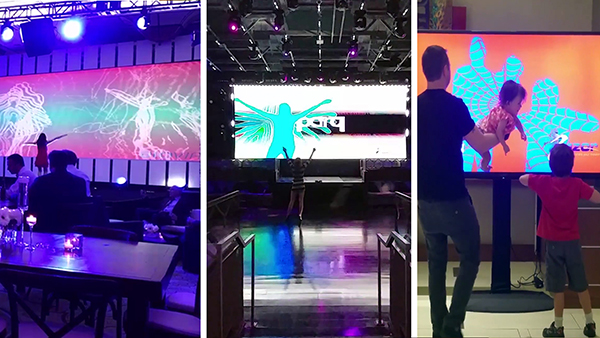Creating Retail and Hospitality Destinations With Sensor-Driven AV
This story first appeared in Xperience, the official publication of AVIXA. For more articles, take a look inside.
By Allison Tardif
 In a world of Amazon and Airbnb, how do stores and hotels compete? By creating destinations and experiences that customers can’t get anywhere else — immersive spaces that trigger personalized, meaningful connections.
In a world of Amazon and Airbnb, how do stores and hotels compete? By creating destinations and experiences that customers can’t get anywhere else — immersive spaces that trigger personalized, meaningful connections.
Brian Dyches, an authority on global retail design, and Tammuz Dubnov, founder of the experiential technology company Zuzor, have worked with many hospitality and retail brands to transform their locations into destinations. “A destination is an environment where you feel like you can sit, relax, enjoy, get perspective, be inspired, and learn. It fits into the actual lifestyle of the individual,” Dyches says.
Brands can use a variety of approaches to turn a space into a destination, from taste and smell to a great customer service experience. Companies that have successfully made the shift, according to Dyches, include the Nike Flagship store in New York, Moxy Hotels by Marriott, and the Rainforest Café. Nike invites customers to a lab to personalize their shoes, while Moxy Hotel lobbies reflect where they’re located, whether Seattle or New York, offering guests a city-specific experience. The Rainforest Café uses sound, lighting, and temperature to engage all five senses in a unique dining experience.
According to Dubnov, many companies have not fully explored how to use audiovisual technology to create a sense of destination. New solutions, like sensor-driven and augmented-reality (AR) experiences can help put a brand on the map. Among Dubnov’s projects, video walls of static content come to life when a customer engages with them. These interactive AR installations make the viewer an active participant in the message. The displays can sense the person and que the appropriate content. If a child approaches the video wall, it can play child-friendly content from Disney, for example, and then switch toinfoin a message from Budweiser when an adult approaches the screen. Through body gestures, customers can also choose what they want to see.
So far, say Dyches and Dubnov, guests and customers have reacted positively to these experiences — when they even realize what’s happening. In some cases, like in one Westin hotel project, children caught onto the interactivity before adults did.
Dubnov thinks most AV integrators and designers are ready to start adding sensor-driven elements to projects with just a few new tools and insights. The idea that video walls can be filled and continually updated with user-driven, interactive content solves an ongoing issue for a lot of AV professionals and end users: how to fill the content pipeline. Moreover, experiential content engages audiences, drawing their attention for longer periods of time (and, if truly engaging, it ends up on social media).
Brian Dyches and Tammuz Dubnov will explore interactive content at InfoComm 2019, June 8-14, as part of the show’s Seminar & Workshop program.




